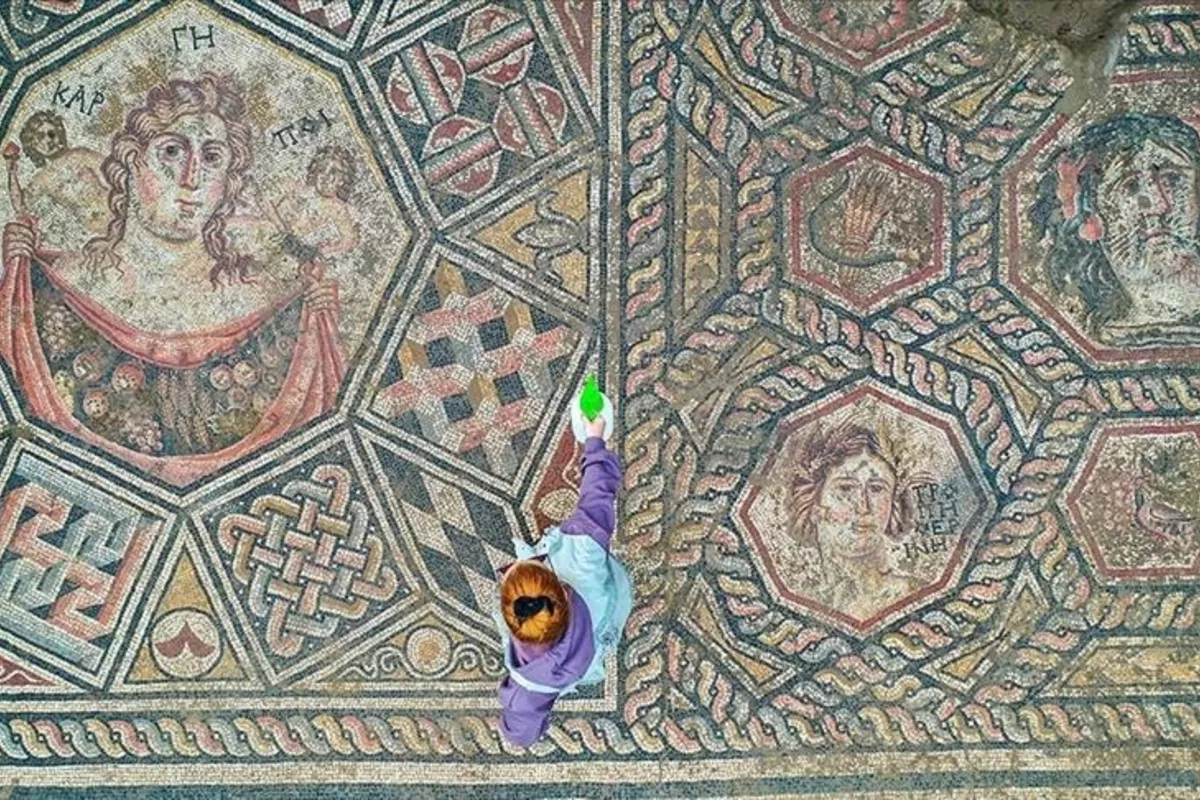
Photo: Anadolu Agency
Archaeologists in the Iznik district of northwestern Türkiye have uncovered a section of a 3rd-century mosaic floor, initially spotted during sewer construction in 2014, officials informed.
The discovery halted the original construction and led to the expropriation of the site, allowing for proper archaeological investigation, The Caspian Post reports, citing Turkish media.
Excavations launched this year by the Iznik Museum Directorate revealed a well-preserved mosaic believed to be part of a hall belonging to either a Roman-era public building or an elite residence.
The floor features depictions including a woman holding a basket of fruits, a female figure thought to represent Lake Iznik and a range of geometric and three-dimensional motifs.
Archaeologist Yusuf Kahveci, a member of the excavation team, told Anadolu that the mosaic was originally found to extend beneath the road and an adjacent property, prompting the start of expropriation procedures.
He said this year’s work uncovered the entire 50-square-meter mosaic within the expropriated area, along with walls of the structure and upper layers preserved above it. Chronology was determined through the mosaic’s stylistic features, colors and motifs, as well as ceramics and coins recovered at the site.
“We found that the main walls of the building were once covered with wall paintings, and the floors were paved with marble. However, both the frescoes and the marble floors were damaged or removed over time. Much of the mosaic floor has survived intact. In the preserved section, there are three different panels surrounded by a border decorated with pomegranate and ivy leaves,” he said.
Describing the artwork, Kahveci said: “The left panel features a goddess of abundance with mythological figures on either shoulder. There are inscriptions with abbreviations above them, which will be better understood after epigraphic analysis.”
“This is a very new find, only a few weeks old. Scientific studies have not yet been conducted. The central figure holds a basket of fruits, plants grown in Iznik during that period. The surrounding geometric and three-dimensional motifs show masterful craftsmanship,” he added.
He highlighted the central figure: “We can read the name Askania beside the central figure. This was the Roman-era name of Lake İznik. The mosaic depicts the lake.”
“The figure is associated with water, with hair rendered in algae-like detail, a crown made of crab claws, and waves illustrated around her neck. In other words, Lake Iznik is personified as an ancient woman,” he added.
Kahveci noted that the surrounding braided motifs use 3-4 tones of each color and include geometric and three-dimensional patterns such as labyrinths and Gordian knots.
Although the exact function of the building remains unclear, Kahveci said the structure may have been a state-built public building, a wealthy Roman villa or even a bath complex, as only a small part has been excavated.
He added that findings from the site indicate continuous settlement from the 3rd century through the 15th-16th centuries and into the early Republican period.
Share on social media